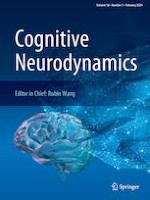24-01-2023 | Research Article
Graph theoretical brain connectivity measures to investigate neural correlates of music rhythms associated with fear and anger
Published in: Cognitive Neurodynamics | Issue 1/2024
Log inActivate our intelligent search to find suitable subject content or patents.
Select sections of text to find matching patents with Artificial Intelligence. powered by
Select sections of text to find additional relevant content using AI-assisted search. powered by
